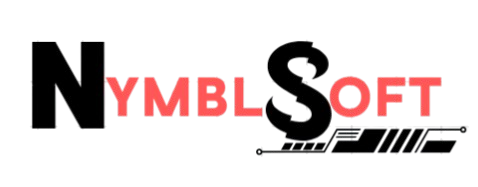Have you ever wrapped up a busy month at work, only to spend hours sorting through data just to figure out what went right or wrong? That’s where EO PIS comes in handy. It’s a smart way to handle all that information at the end of a period, like a month or a project cycle, without the usual headaches. In this guide, we’ll break it down step by step, so you can see how it fits into your daily operations.
EO PIS stands for End-of-Period Information System. Think of it as a tool that pulls together data from different parts of your business, checks it for accuracy, and turns it into clear reports. This isn’t some fancy tech jargon—it’s practical for anyone running a team or a company. With businesses moving faster than ever, having a system like this keeps things smooth and helps spot issues early.
Now, let’s look at why this matters today. In 2025, with remote work and global teams, old-school methods like spreadsheets just don’t cut it anymore. EO PIS steps up by automating the heavy lifting, so you can focus on what really drives growth.
Key Takeaways
- EO PIS automates data collection and validation, cutting reporting time from days to hours for better decision-making.
- It integrates AI and real-time analytics, addressing compliance and operational silos in modern businesses.
- Adoption can boost efficiency by up to 55% in HR and finance, based on 2025 surveys.
- Compared to traditional KPIs, EO PIS offers adaptive, holistic metrics for strategic alignment.
Core Components of EO PIS
EO PIS isn’t one single app or gadget—it’s built from a few key parts that work together. At its heart, it’s about making sure your data is reliable and ready when you need it. Let’s unpack these pieces.
Data Collection Basics
This starts with gathering info from everywhere in your business. Sensors in a factory might track machine output, while software pulls sales numbers from your CRM. For example, picture a retail store at month-end: EO PIS could automatically log inventory levels and customer traffic without anyone typing it in manually.
To make this work well, connect everything through simple APIs. That way, you avoid those annoying data gaps where one team doesn’t know what the other is doing. It’s like having all your puzzle pieces fit without forcing them.
Validation and Analysis
Once the data’s in, EO PIS checks it over. It looks for errors, like mismatched numbers or missing entries, and flags them right away. With AI helping out, it can even spot unusual patterns, such as a sudden drop in productivity that might signal a problem.
Reports from 2025 show this step cuts manual errors by 40-50%. That’s huge for avoiding costly mistakes, like wrong financial statements that could lead to audits.
Reporting and Insights
Finally, it spits out easy-to-read dashboards. These show key metrics, like how efficient your team was or where resources went. In a logistics company, this might reveal why deliveries were late last quarter, helping you fix it fast.
One case involved a small shipping firm that used EO PIS to trim delays by 30%. They saw patterns in their data that no one noticed before, turning okay performance into something much stronger.
Benefits of EO PIS Adoption
Switching to EO PIS brings real changes you can feel. It’s not just about saving time—it’s about working smarter overall. Here’s how it pays off.
Efficiency and Cost Savings
By automating reports, you free up hours that used to go to tedious tasks. A 2025 HR survey found 48% of teams plan to add tools like this for things like payroll, cutting down on overtime and errors.
If you’re dealing with manual delays, EO PIS is a quick fix. It handles the grunt work, so your team can tackle bigger goals without burning out.
Compliance and Risk Reduction
In a world full of rules, like GDPR for data privacy, EO PIS builds in checks to keep you safe. It ensures reports meet standards, reducing the chance of fines.
For finance folks, this means accurate tax filings every time. Add encryption, and you’ve got a layer of protection against leaks, which is key for trust in global ops.
Strategic Decision-Making
Unlike basic metrics, EO PIS gives a full picture. It ties everything together for insights that guide your next moves. A study noted it can improve employee retention by 62% through better offboarding data, showing how small tweaks lead to big wins.
Challenges in EO PIS Use
No system’s perfect, and EO PIS has its hurdles. Knowing them upfront helps you prepare.
Implementation Barriers
Getting started can cost a bit upfront, plus there’s the learning curve. Teams comfy with old ways might push back, seeing it as extra work at first.
Start small: Try it in one area, like finance, to show quick results. That builds buy-in without overwhelming everyone.
Scalability Issues
For tiny businesses, a full setup might feel too big. But cloud options make it flexible—you pay for what you use.
Users report 55% better ROI after half a year, so it grows with you. Adjust as your needs change.
Integration Hurdles
Linking to existing tools, like your current BI software, isn’t always smooth. Data silos can pop up if not handled right.
In IT, one firm struggled with migration but sorted it by mapping out connections first. EO PIS shines here over general tools because it’s tailored for period-end focus.
EO-PIS Applications by Industry
EO PIS fits different fields, adapting to what each needs. Let’s see it in action.
Finance and Reporting
Month-end closes get faster with validated data. A mid-size bank cut audit times using it, spotting discrepancies early.
It’s perfect for handling complex reports without the stress.
Manufacturing and Logistics
Track shifts or batches for output and downtime. Integrate with IoT devices to get real-time equipment info.
This helps pinpoint bottlenecks, keeping things moving.
HR and Offboarding
Automate exits with compliance checks and portals. It reduces negative feedback by 55%, per data, by making the process respectful and thorough.
EO PIS vs. Alternatives
How does EO PIS stack up? It’s specialized, but let’s compare.
Traditional KPIs Comparison
KPIs are single stats, like sales targets. EO PIS wraps them in a system that’s dynamic, adjusting as things change.
This gives a broader view, not just isolated numbers.
ERP and BI Tools
ERP systems, like SAP, manage processes but aren’t great at period-specific insights. BI tools, such as Power BI, analyze data but skip built-in validation.
EO PIS combines both for end-to-end ease.
Emerging AI Platforms
Pure AI might predict trends but lacks structure. EO PIS blends AI with frameworks for reliable results.
2025 trends point to 70% hybrid use, mixing the best of both.
2025 Trends in EO PIS
Looking ahead, EO PIS is evolving fast. Here’s what’s new.
AI and Automation Advances
Predictive features forecast next periods. By year-end, 60% of systems will use machine learning for smarter alerts.
This means catching issues before they grow.
Sustainability Integration
Track green metrics, like energy use. Healthcare spots are using it to cut waste.
It’s a nod to eco-friendly ops.
Global and Remote Adaptations
Cloud access supports teams anywhere. Great for cross-border rules.
How to Implement EO PIS
Ready to try? Here’s a simple path.
Step-by-Step Guide
- Check your current setup—what reports do you need most?
- Pick tools, maybe with Apache Airflow for flows.
- Train your crew and test in a small group.
- Track wins, like time saved, to tweak.
Best Practices
Keep data secure with regular checks. Update for new laws.
A tech company gained 40% efficiency by following this.
Tools and Vendors
Go open-source for starters or enterprise for big needs. Free ones suit small ops; paid scale up.
FAQs
What does EO PIS stand for?
EO PIS stands for End-of-Period Information System, a setup that handles data at the close of cycles like months or projects. It’s all about automating collection, checks, and reports to make business smoother. In practice, it pulls from sources like ERPs and turns raw info into actionable insights. This helps teams avoid errors and stay compliant. For example, in finance, it ensures accurate closings without manual hassle. Overall, it’s a flexible tool for efficiency in 2025’s fast pace.
How does EO PIS differ from KPIs?
EO PIS is a complete system for managing data end-to-end, while KPIs are just individual measures like sales goals. EO PIS automates validation and reporting around those KPIs, making them more useful. It adapts with AI for real-time tweaks, unlike static KPIs. Businesses use it to connect dots across ops, spotting trends KPIs might miss. In short, KPIs tell you what happened; EO PIS shows why and how to improve. This shift boosts decisions in areas like HR or manufacturing.
What industries use EO PIS?
EO PIS shows up in finance for closings, manufacturing for shift tracking, logistics for delivery reviews, and HR for offboarding. It’s versatile for any field with periodic data needs. In healthcare, it monitors resource use; in tech, it handles project wraps. The key is its adaptability to compliance and efficiency demands. As 2025 trends push AI integration, more sectors like retail are adopting it for inventory insights. It fits small to large ops, solving silos everywhere.
Is EO PIS expensive to implement?
Costs start moderate but vary by scale—cloud versions keep it affordable for small teams. ROI hits fast, often in months, through less errors and quicker reports. A 2025 survey shows 55% better returns after setup. Factor in training, but phased rolls cut risks. Compared to ongoing manual costs, it’s a saver. For enterprises, custom tools add up, but open-source options lower barriers. Weigh your needs; it pays off in efficiency gains.
What are 2025 trends for EO PIS?
In 2025, AI drives predictive analytics, with 60% of systems using machine learning for forecasts. Sustainability tracking, like energy metrics, is rising for eco-compliance. Global adaptations via cloud support remote teams and cross-border rules. Automation cuts manual work further, blending with ERPs for seamless ops. Expect more hybrids with BI tools for deeper insights. These shifts address silos and speed, making EO PIS key for agile businesses.
Can small businesses adopt EO PIS?
Yes, especially with cloud setups that scale without big upfront costs. Start small, like in one department, to test waters. It tackles legacy issues affordably, boosting efficiency by 40-50% per reports. Tools like open-source integrations fit budgets. For growth, it adapts easily. Avoid overkill by assessing needs first. Many small ops see quick wins in reporting, proving it’s not just for big players.
Try EO PIS in your next cycle to cut down on chaos and amp up your edge—small steps lead to big

